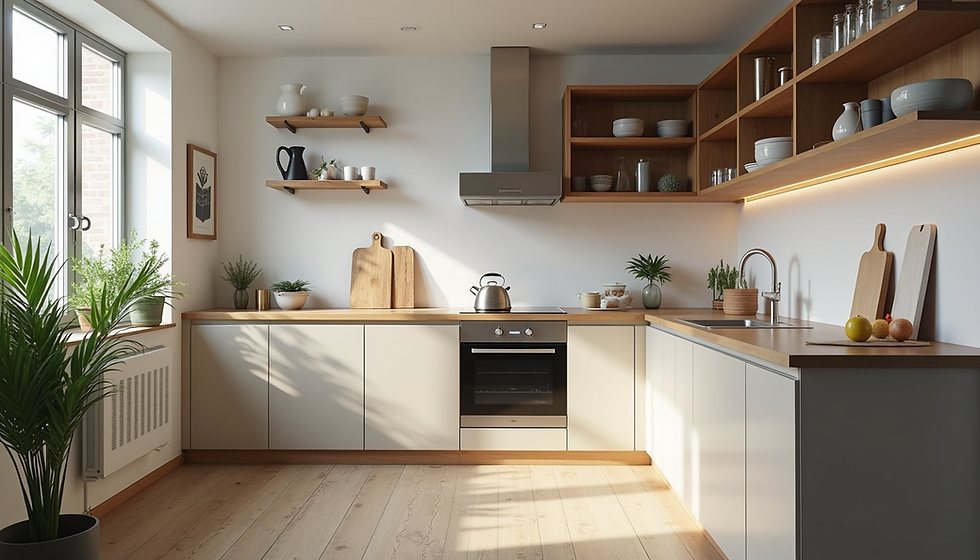Underground Drainage Installation Made Simple In Chichester West Sussex
- Richard Bone

- 11 hours ago
- 3 min read
Top Joints Construction 01243 933172
When it comes to managing water around your property, a well-installed drainage system is essential. It prevents flooding, protects your foundation, and keeps your outdoor spaces usable. We want to share what we’ve learned about drainage system installation to help you understand the process and make informed decisions. Whether you’re tackling a new build or upgrading an existing system, this guide will walk you through the key steps and considerations.
Understanding Drainage System Installation Chichester
A drainage system collects and directs water away from your property. It includes pipes, channels, and sometimes pumps that work together to move water safely. Proper installation ensures water flows efficiently and avoids blockages or damage.
We recommend starting with a clear plan. Assess your property’s layout, soil type, and water flow patterns. This helps determine the best locations for drains and pipes. For example, areas where water pools after rain are prime spots for drainage.
When planning, consider:
The slope of your land – water should flow downhill naturally.
Nearby water sources like gutters, ponds, or streams.
Local regulations or permits required for drainage work.
Taking time to plan saves headaches later and ensures your system works well for years.

Steps for a Successful Drainage System Installation Through Chichester & Surrounding Towns
Installing a drainage system involves several clear steps. We’ll break them down so you can follow along or discuss them confidently with your contractor.
Mark the Drainage Route
Use spray paint or stakes to outline where pipes and drains will go. This visual guide helps avoid mistakes.
Excavate Trenches
Dig trenches along the marked route. Trenches should be deep enough to allow pipes to sit below the frost line and maintain a steady slope.
Lay a Gravel Base
Add a layer of gravel at the bottom of the trench. This supports the pipes and improves drainage.
Install Drain Pipes
Place perforated pipes on the gravel. These pipes collect water through small holes and direct it away.
Cover Pipes with More Gravel
Surround the pipes with gravel to keep soil from clogging the holes.
Add a Geotextile Fabric
Lay fabric over the gravel to prevent soil mixing with the gravel while allowing water to pass.
Backfill the Trenches
Fill the trench with soil and compact it gently.
Connect to a Safe Outlet
Ensure water drains to a suitable place like a soakaway, storm drain, or natural watercourse.
Each step is important. Skipping or rushing any part can reduce your system’s effectiveness.
Choosing the Right Materials for Drainage System Installation
Materials matter in drainage installation. They affect durability, cost, and performance. Here are some common options:
PVC Pipes: Lightweight, affordable, and easy to install. Ideal for most residential drainage.
Clay Pipes: Traditional and durable but heavier and more expensive.
Concrete Pipes: Strong and long-lasting, used for larger or commercial projects.
Gravel and Aggregate: Used around pipes to improve water flow and prevent clogging.
Geotextile Fabric: Keeps soil out of the gravel while allowing water through.
We usually recommend PVC pipes combined with gravel and geotextile fabric for most home drainage projects. They balance cost and performance well.

How to Maintain Your Drainage System
Once installed, your drainage system needs regular care to keep working well. Here are some simple maintenance tips:
Clear Debris: Remove leaves, dirt, and other debris from surface drains and gutters.
Inspect Pipes: Check for cracks or blockages in visible pipes.
Flush Pipes: Occasionally flush pipes with water to clear minor blockages.
Check Outlets: Make sure water flows freely from the system’s outlet.
Monitor Water Pooling: After heavy rain, look for new pooling areas that might indicate a problem.
Regular maintenance prevents costly repairs and extends your system’s life.
Why We Recommend Professional Help
While some drainage tasks can be DIY, we often suggest consulting professionals for underground drainage installation. They have the experience and tools to:
Design a system tailored to your property.
Ensure correct pipe slope and placement.
Handle permits and regulations.
Use specialised equipment for trenching and pipe laying.
For a free quotation please contact our friendly team on - 01243 933172, or send us an email with your enquiry, along with some images.
Taking the Next Step with Confidence
Installing a drainage system doesn’t have to be complicated. With the right plan, materials, and care, you can protect your property from water damage effectively. We hope this guide has made the process clearer and more approachable.
Remember, good drainage is an investment in your home’s future. Whether you do it yourself or hire a professional, taking action now will save you time and money down the road. Start by assessing your property and planning your drainage system installation today.
Top Joints Construction




Comments